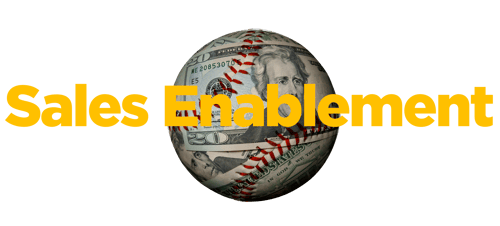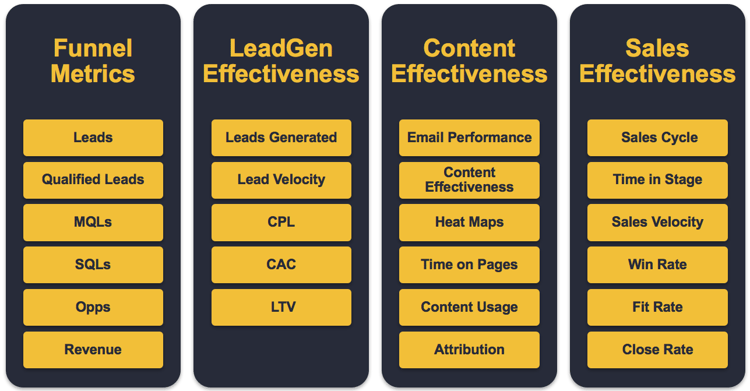 Next week, I’ll be in Boston for the largest gathering of marketers in the world, HubSpot’s 2016 Inbound Conference. Most exciting about the conference this year is the addition of sales-focused topics. As a result, it’s also now the largest gathering of people in the world focused on the entire marketing and sales funnel.
Next week, I’ll be in Boston for the largest gathering of marketers in the world, HubSpot’s 2016 Inbound Conference. Most exciting about the conference this year is the addition of sales-focused topics. As a result, it’s also now the largest gathering of people in the world focused on the entire marketing and sales funnel.
On Thursday, I’ll be speaking about what is fast becoming one of my favorite subjects, sales enablement. Specifically I’ll be talking about the crucial importance of this emerging discipline and how it bridges the divide between sales and marketing, allowing companies to grow faster and at lower costs.
A key discipline of sales enablement is the importance of tracking the right metrics throughout the entire buyer/seller journey and funnel. I’ve yet to meet a growth-focused company that excelled at tracking the right metrics, that wasn’t growing at least at the rate of their peers (or far more often, at a faster rate). Inevitably, when I meet a company that isn’t growing, I find that a large part of the problem is they lack the data and metrics to make smart decisions and adjustments.
For those that can’t make it to my presentation (and even for those that do), here are the key metrics you should be tracking.

1. Funnel metrics
It’s crucial that you are able to quickly see an accurate picture of the status of your funnel. A clear picture of the funnel allows you to both assess the effectiveness of your past efforts, and to know where you need to allocate your energies and resources for the future.
Different companies use different definitions for various stages of their funnel. As long as you have crystal-clear definitions for each stage of the funnel, you’re in good shape.
What’s equally important is the time frames you track. Every company should track at least three time frames:
- A Moment In Time - This is a simple snapshot of your funnel on any given day.
- Monthly - Focuses on the movement within the funnel in a given month.
- Quarterly - Focuses on the movement within the funnel in a given quarter.
2. Lead generation effectiveness
Generating leads is (obviously) important. Equally important is tracking the quality, progress and economics of your lead generation efforts. Here are some key things to track:
- Lead generation
- Lead velocity (see here for a definition of lead velocity, or here for a workbook to determine the velocity you need and to track it)
- Cost per qualified lead
- Cost to acquire a customer
- Lifetime value
3. Content performance
Content continues to play an increasingly important role in demand generation and business growth. The problem is that while companies are investing more and more money and time into creating content, much of it is wasted; and few companies are tracking the right things to know what adjustments they should make.
Here are some of the key areas we recommend tracking to assess content performance:
- Email performance: (I’ll be sharing a post in the future on the various email performance metrics we recommend)
- Content effectiveness: Every piece of content should be created to serve a purpose (and the vast majority of which should be measurable). If you can’t articulate the purpose for a piece of content - DON’T CREATE IT!! For each piece of content, track how effectively it’s fulfilling its purpose.
- Heat Maps: Heat maps provide a visual representation of where people spend time on a piece of content. They’re becoming increasingly popular for managing websites and emails, but they can be used for more than that as well. You’ll be surprised how much you learn when you watch how people actually interact with your content.
- Time spent on pages: Understanding where people spend their time is quite valuable in both understanding what matters to a specific individual and for guiding your overall content plan.
- Content usage: How and when is content used. Tracking its use and impact is important to ensure you’re spending your time and money on the right content.
- Attribution analysis: I’m a big fan of hockey, and one of the things I love about the stats they keep is that a goal and an assist are considered equally valuable. The same approach should be used when managing content. You should know what content contributes to positive (or negative) outcomes and when that content is best used.
4. Sales effectiveness
Books have been written on sales metrics to track. Here are the key ones we focus on:
- Sales cycle: Measure the length of time from first contact to decision. Segment it by total (combined wins and losses) as well as by wins and by losses. Also, be careful about using averages. We prefer segmenting by time periods (i.e. 20% less than 90 day, 37% 90 - 270 days, and so on).
- Time in stage: Be sure you track the same metrics for each stage in your revenue generation process.
- Sales velocity: How many active opportunities can an effective salesperson manage.
- Fit rate: How many qualified leads do you need to talk to, to get one to your closing sequence (whatever that is).
- Close rate: How many prospects do you need to reach your closing sequence so that one buys.
- Win rate: Combines fit and closing rate; so it’s how many qualified leads do you need to talk to so that one buys.
As the saying goes, what gets measured, gets done. Focusing on the right metrics accelerates learning, enhances alignment and leads to greater results, faster.

 Doug Davidoff
Doug Davidoff